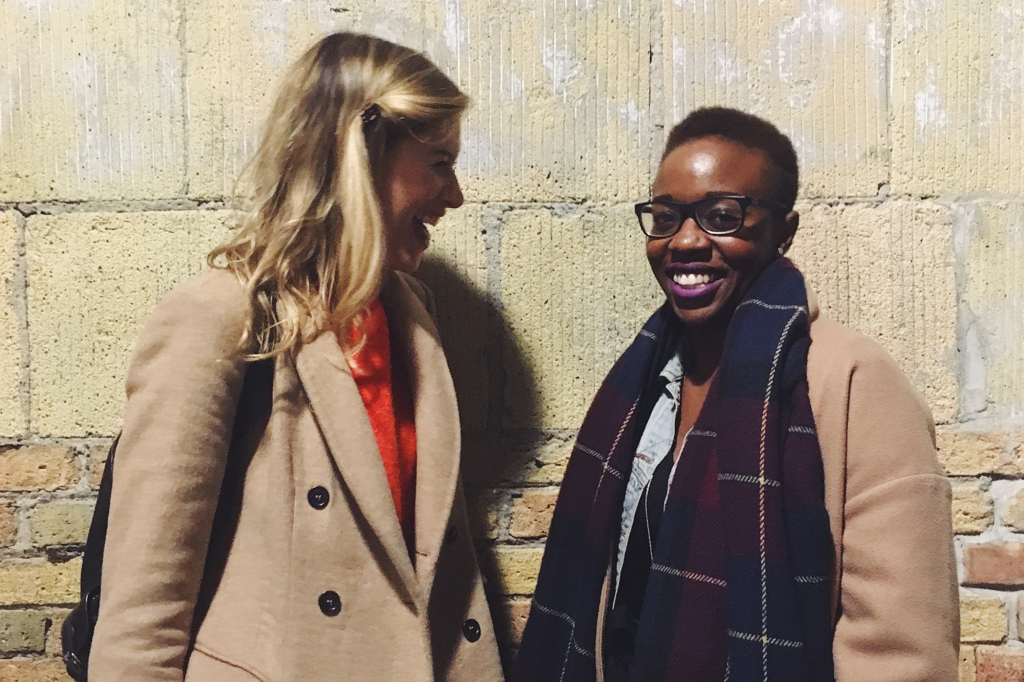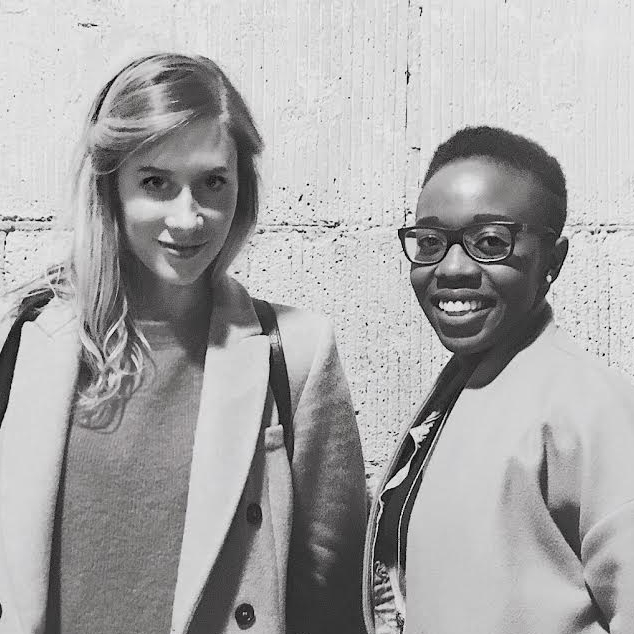When Blind Casting Isn’t Enough
Natasha Mumba and Rebecca Gibian are actors who connected while performing at the Shaw Festival and are now putting together Black Ink Collective, a resource devoted to the circulation of a wider variety of perspectives.
As we’ve grown up and into the Canadian theatre community, we’ve watched the concept of “blind casting” evolve and peak in its relevance. The word “blind” is associated with a sense of elimination of identity. In an attempt to validate inclusive casting, our community will frequently erase race, overlook gender, or ignore sexual identities, increasing the number of diverse bodies on stage without necessarily engaging with them. At times, our stories are given new life through creative casting. However, this cannot be the only effective path towards inclusivity.
The theatre community is saturated with words like “diversity,” “inclusivity,” and “representation,” and yet these words have somehow begun to lose their meaning through overuse. Like the answer to a question we’ve somehow lost sight of, the push for representation can feel like a safety net, or, sometimes, an afterthought.
As members of a generation that embraces identity and revels in its differences, and as theatre-makers and audience members, we crave representation through a variety of stories that acknowledge culture, gender, sexuality, race, and the intersectionality that makes us who we are.

Natasha and Rebecca at the workshop presentation of In the Continuum by Danai Gurira and Nikkole Salter. Photo by Stephen Tracey
Natasha:
From the moment I decided I wanted to act in the fifth grade until my graduation from theatre school twelve years later, I never had the opportunity to play a character that was written for someone who looks like me. And it wasn’t until the year after I graduated, when I was cast as Camae—the Black female character in Katori Hall’s The Mountaintop— that I realized I had been completely disregarding the colour of my skin in the context of my work in the theatre.
Before I came to this realization, every time I was given a role I would unconsciously ask myself the same series of questions: Am I supposed to play this part as a Black person? Should I look for the research that allows me to be here? Does that matter? If acting is inherently letting myself enter into another reality, how much of myself do I allow?
But with Hall’s play I could eliminate this process. I didn’t need to validate myself. Now, that’s not to say that I share an identical background with my character—just because we share the same shade of skin doesn’t mean we share an identical context. But, it allowed me to acknowledge what I look like and not feel like I had to justify my full self being on that stage. I could just play the part. This experience challenged me to reassess my perspectives on what exactly the words “diversity” and “representation” meant to me.
I recently saw the production Barber Shop Chronicles, by Nigerian playwright Inua Ellams, at the National Theatre in London. The play follows a series of characters over the span of one day as they interact in barbershops all around Africa and in one central location in Peckham, London. When I walked into the theatre, I was welcomed by the sounds of Afrobeats, R&B, Hip-Hop, Soca, and I felt instantly seen. I was surrounded by Black men and woman who couldn’t help but dance and sing along, connecting with each other and acknowledging that, somehow, the unspoken cultural commonality we shared between us was about to be a public experience we shared at the National Theatre in London—the last place I thought this would be happening. The actors held nothing back as they filtered onto the stage, dancing and talking to the audience. It was as if we all had collided at some kind of family reunion.

Allison Edwards-Crewe and Natasha in In the Continuum by Danai Gurira and Nikkole Salter. Photo by Stephen Tracey.
This production was by far one of the most exhilarating theatre experiences I have had—I left the building buzzing. I immediately ran to the stage door to thank the actors for the show, and I asked one of the men how it felt sharing this story at this theatre. He said he was happy that everyone was getting a chance to see this play and experience several true perspectives of a Black man—but they were really up there doing it for their people. “We want them to know we see them, and that this is theirs as much as it’s ours.”
As I walked back to my hotel, I realized: maybe this is what it means to be represented. It’s an experience that calls out to a culture, one that allows you to be seen fully, both as a performer and an audience member. The audience doesn’t only get to listen to the words coming out of the actors’ mouths, but they also have to pay attention to the story their skin is telling.
This experience and being in those kinds of spaces shouldn’t be a rare one. I believe we need to keep challenging ourselves to be more curious about each other. Right now in our community, we have so many artists dedicated to sharing their perspectives, as well as established work that explores so many different cultures and points of view. So my question is this: If the work exists and continues to be created, why isn’t it being produced?
As I walked back to my hotel, I realized: maybe this is what it means to be represented.
Rebecca:
Ever since I can remember, I have struggled with the way adults represented me. I saw inaccurate and caricatured depictions of my age group, created by grownups from a far-off vantage point, that first made me think there might be room for me as an artist. “These people clearly forget what it is to be young,” I would think. I vowed to myself around the age of eleven that even as I grew up, I would not allow myself to forget this feeling. I would not allow adulthood to overshadow the notion that other people, including children and teenagers, are thinking people too. If my age group was so often wrongly depicted as naive and ridiculous, there must be room for me to tell my own version of these stories. The dissonance that I felt when I saw “myself” represented on stage made it more valid, or at least more important, to add my voice to the conversation.
I now realize, as I continue to encounter this same feeling even in my twenties, that what I had identified as a lack of respect for young people, and then for young women, could simply be summarized as a craving for honest representation. This desire for authenticity, to help make room for individuals rather than archetypes, became the core driver of my work. If I could provide an outlet for actors and members of my community to embrace themselves fully—young, queer, Black, Asian, gender fluid, etc.—then I might be doing right by my eleven-year-old self, staying true to an updated version of that same vow.
One of the benefits of being part of a company of actors, like at the Shaw Festival, is that there is an opportunity for projects should any of us artists care to be creative on our own time. My goal last summer was to provide a creative outlet for the younger company members to create and perform in their unique voices and explore subject matter that spoke to us directly. My hope was to showcase some of the variety that surrounded me, and perhaps to revel in some of the creativity and drive that comes with keen emerging artists.

Adrian Shepherd-Gawinski and Rebecca Gibian in the staged reading of Birds
We put up a contemporized adaptation of Mark Ravenhill’s pool (no water), with an explicit mandate to represent fully formed and authentic characters—coming together to share a story that was not about their otherness, but about their flawed humanity. To my surprise, the audience seemed particularly enlivened by this focus on the performance of individuality, tied to a dark yet honest story—a potent reminder that audiences come to the theatre not only to be entertained but also to be challenged. This experiment confirmed for me the power of identity onstage, both for the actor to feel free and for the audience to relish that special, indescribable charisma that radiates off of actors who are doing anything but hide.
Everyone benefits from a willingness to engage entirely with diverse characters on stage. A young actress being allowed to play a young woman in all her complexity not only makes for a richer story and a more compelling experience for an audience but also empowers the actor to explore her craft more deeply, as she develops this fully realized character. To harness an actor’s magnetism is beyond any argument for political or social justice—it’s a highly effective theatrical tool. This attitude makes for better art.
I believe it is our duty as actors, creators, and audience members to take part in the search for stories that allow us all to feel this kind of representation. We are so far beyond featuring our multiplicities through narrow types or formulas. Although some of us may relate to facts in a character’s life or background, I believe we can all relate to any authentic human story, simply through its honesty.
With this in mind, I believe good theatre is meant to bring us together, not pull us apart. It is time to take risks on variety, in our community, and in our stories. I do not believe identity politics should be the only driving force behind our choice of plays, and I am not merely interested in stories as social justice projects—we are not doing this because it is Right, capital R, but because as artists we are interested in telling the very best stories. I’d say the best plays are those that harness theatre’s defining trait: the fact that it is happening live. And what is more alive than relevant stories?
With this article, we are launching our website and our first monthly reading series announcement. Our goal in creating Black Ink Collective is not to create finished products or to produce our own shows, but to act as a resource for stories—as a kind of bank of perspectives. We presented In The Continuum by Danai Gurira and Nikkole Salter, directed by Kimberley Rampersad and generously funded by Obsidian Theatre’s Darktown and the National Theatre School of Canada’s TEC Grant, as our first Workshop Presentation last fall. A staged reading of Birds by Rebecca Gibian was our first play in development in February. We are now launching the first play featured as a part of our reading series, available on our website. This month’s play reading is Inua Ellams’s Barber Shop Chronicles.
Each month, we will bring together a variety of theatre artists from the community and host a reading of the month’s featured play. We will then publish the play information, and the discussion points voiced by the cast after our reading. Through this monthly series, we hope to bring more voices into the conversation and to encourage the circulation of a wider variety of stories into our Canadian theatrical landscape.
Have a play you want to share? A voice you’d like to read aloud with? Shoot us an email at blkinkcollectiv@gmail.com, or find us on our website.









Comments